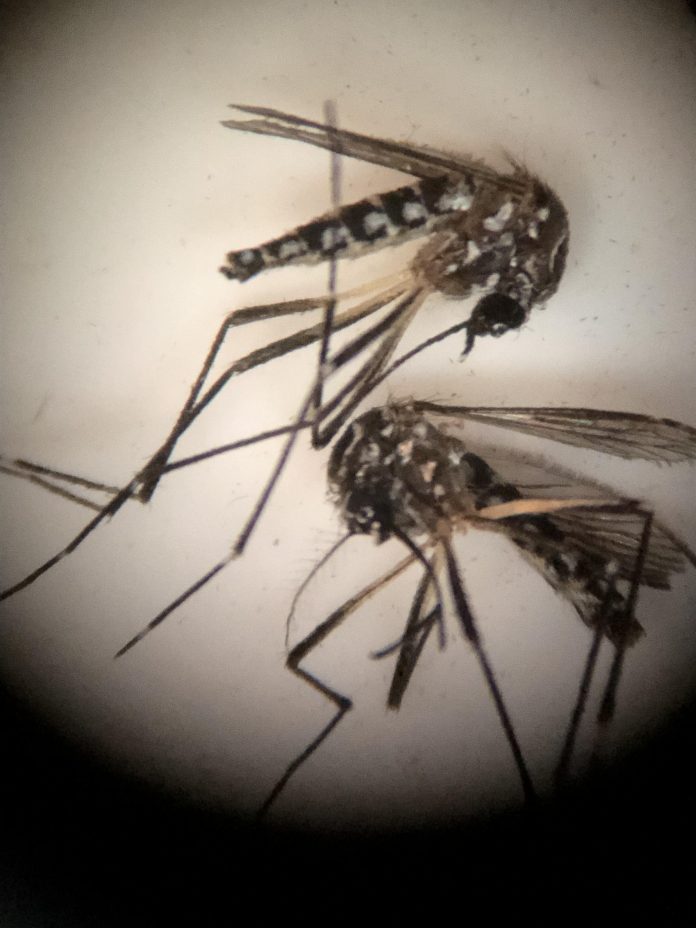
By Sofia Youngs
With a sprinkling of malaria cases already reported in the USA this year, mosquito control officials are being especially vigilant this year about asking residents to prepare for what could be a record reproductive year for mosquitos.
Aedes Albopictus, better known as the eighties mosquito, reproductive rates have increased significantly with newfound weather changes in Southern California.
“It’s going to be a bustling year,” Heather Hyland, director of communications at the Orange County Mosquito and Vector Control District, said. Recent rain raises intriguing concerns regarding breeding grounds for mosquitos. “New pockets of rain are wetting areas with mosquito eggs that are essentially dormant, when they come in contact with water, they hatch.” Although the Aedes Albopictus has been around for over 10 years via international trade cargo ships, weather changes, like an increase in rain, have caused a significantly elevated rate of mosquito larva production and a high frequency of mosquitoes in traps.
“This is the most [mosquitos] we’ve seen in 16 years,” Laura M. Krueger, Vector Ecologist, and Board Certified Entomologist at the Control District, said.
“Each [Aedes Albopictus] can plant an average of 400 eggs in a day, the former average mosquito per trap wad 59.0, currently we are seeing 114,” Hyland said. Although typical mosquito breeds are known to reproduce rapidly, laying about 100 eggs in a day in pools of water, above the waterline, this new strain of mosquito is much different. These mosquitos will lay eggs in virtually any space holding water: coffee pots, vases, buckets, etc.
“If the water in your pool has turned green, it may become a breeding ground for these new mosquitoes,” Kruger said. “The location has the ability to breed about 3 million new mosquitoes every month.”
The Aedes Albopictus transmit deadly diseases such as yellow fever viruses, dengue, chikungunya, and more. In addition, unlike other breeds of mosquitos, the Aedes Albopictus prefers human blood over any other mammal. While residents in Southern California should be worried about the dangers of the Aedes Albopictus, change starts with the readers, she said.
Identifying this umfamilar strain as well as methods for staying mosquito-free is the key to a healthy and happy life. The Aedes Albopictus are small, black mosquitos with white stripes. They mature in about one week from egg to adult; the immature larvae swim in stagnant water and look like tadpoles to the uneducated eye. In order to mitigate the number of bites, drill holes into the bottom of wall pots or bins to prevent stagnant water from occurring. Do not share any root plant cuttings if they are laid in water; sharing has the capacity to spread mosquito eggs and further the spread of dangerous invasive species. Even so, using insect repellent containing D.E.E.T., Picaridin, lemon eucalyptus oil, or IR 3535, will hinder already mature mosquitos from biting users.
The Aedes Albopictus does pose a severe threat to SoCal residents, however, utilizing proper protocols given by the Orange County Mosquito and Vector Control District ensures individuals that infection may be prevented.
According to the Centers for Disease Control, five cases of malaria have already been reported this year, though all five patients have been successfully treated.
Locally acquired mosquito-borne malaria has not occurred in the United States since 2003 when eight cases of locally acquired P. vivax malaria were identified in Palm Beach County, FL Despite these cases, the risk of locally acquired malaria remains extremely low in the United States, the CDC said, but local OC officials are urging extreme mosquito caution this year.
Questions or facts about the Aedes Albopictus can be found on the Control District’s website.
